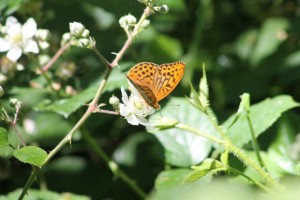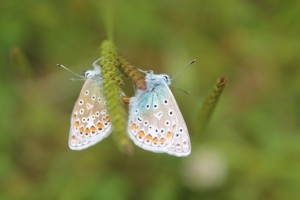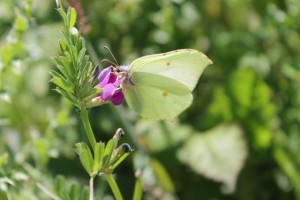Dan
Whilst many on our course have been carrying out field projects in Africa, a couple of us have also been working in the field here in the UK. My particular project has been taking place in the grounds surrounding Marwell Zoo in Hampshire. This is a network of ancient woodland and chalk grassland that is managed to varying extents to try and provide good levels of biodiversity, whilst also generating a crop that can be used by the zoo.
I want to look at the relative success of the sections with more extensive management for biodiversity compared to those managed with less conservation goals in mind. Is the management really resulting in more species?
One way to do this is to monitor a species, or group of species, that are an indicator of a biodiverse habitat. In this case I have been surveying butterflies, a good indicator of the success of terrestrial invertebrates in general. So for the past 3 months I have been walking transects in woodland and grassland armed with a butterfly net and ID guide, counting all the individuals and species that I see. The learning curve has been steep, as before this my butterfly ID knowledge didn’t extend beyond “that one’s white”! But after having counted thousands of butterflies, and 23 separate species in total, my UK butterfly knowledge is up to scratch and I’m now quite adept with the net!
- Silver-washed Fritillary (Argynnis paphia)
- Common Blues (Polyommatus icarus) mating
We know that butterflies are governed by environmental conditions such as temperature, wind speed and cloud cover, so these have been logged at the start of each transect. I am going to analyse whether the varying management techniques of these habitats has an effect upon butterflies response to the weather. If the weather conditions have been horrible for butterflies, will they emerge quicker in the habitats that have been managed for greater diversity once the weather becomes favourable again? This is one of the questions that I hope to answer in my analysis.
At the beginning of July, I presented my ongoing research at the South Downs Student Conference. It was a nerve wracking experience, but my course mates were there for support! I also learned a lot from the experience, giving me ideas for my project as I progress further, and the day was full of interesting talks.
- The creation of open spaces within the woodland
- Female Brimstone (Gonepteryx rhamni)
The whole experience has been really rewarding, coming across deer, hare, foxes and bumblebee nests during my walks in the woods. I have also found myself being stopped regularly by interested local residents going for walks in the area, and have been struck by how much they appreciate the habitat I was surveying. They take real enjoyment from the wild flowers, butterflies and bumblebees in the field, and it just demonstrates the innate pleasure we can get from a biodiverse habitat.
Now the analysis of my data is taking place in earnest, and hopefully I’ll have produced a project of real value by the end of the course.
Posted By : dvf1e13



